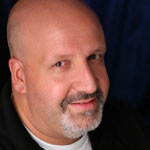My Takeaways From Microsoft Azure Fundamentals Exam Ref
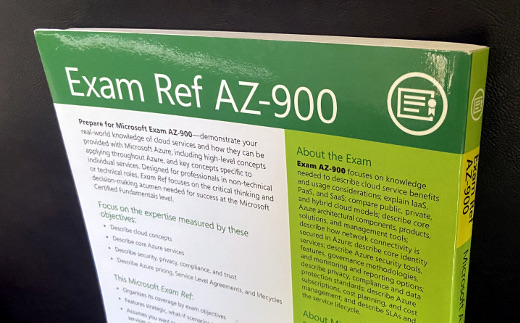
People often ask me how I keep up with the changing world of technology. Where it can a lot at times, a combination of reading, researching, networking, self-study, on-the-job experience and formal training keeps me in the know. When my program at work was going to move from proprietary Web hosting to Microsoft’s Azure cloud platform, I needed to understand enough to work with it. Using a combination of methods mentioned above I dove into the Azure pool head-first to immerse myself in this new ecosystem.
In the course of my research I found Azure certifications, where self-study and courses verified by an exam would yield a qualification stating my knowledge in an area of Azure. The most basic level is Azure Fundamentals, or AZ-900 as the exam is called. As most technology certifications are from software vendors, I felt this was a great place to start. To prepare for the course, I went thru some online training from Microsoft and picked up a copy of the book Microsoft Azure Fundamentals Exam Ref by Jim Cheshire. As much as I like online, having a tangible book I can go back and forth through was something I was looking forward to.
Reading a test prep reference book is a swim in an ocean takeaways, but there were several meta ones I got from this book.
It was outdated at press – A fun fact is that this is the second edition and second copy of the book I have owned. The first, I found out, was already out of date when I bought it. I gave that to a colleague who was somewhat new to working hands-on with Azure. As the platform is constantly changing and adding new features it’s hard to have a current print book.
A different approach to software development – Azure isn't just cloud hosting. It also includes the ability to integrate what are commonly referred to as micro-service applications. To the non-techie, this means that rather than writing code from scratch to send and receive text messages, for example, you can simply use such a service that Azure offers. And of course, you pay Microsoft for that usage. Where it makes for smaller codebases for applications, you are also deeply hooked into the Microsoft cloud architecture.
I don’t need Azure certification – After reading the book, and coupled with the other resources available to me, I realized I didn't need the certification. Sure, I could have spent even more hours and studied and taken the exam (for a fee) but for how I will use my knowledge of Azure it wouldn't be the best use of my time. Rather than knowing how to implement and configure Azure Front Door, I simply need to know it exists and what its purpose is.
More and more technicians have a need to learn about Azure cloud - and other cloud services such as Amazon Web Services, or AWS - as more and more companies are moving to the cloud from their on-premise data centers. Therefore the need exists for training and certification. This exam prep book covered it all - at that time - and if anything, subsequent editions will include changes to the platform. If you are into consuming information in book format, I highly recommend this reference guide.
As I passed along the last copy I had of this book to a colleague at work, I am doing the same to another colleague at work who is also getting immersed into Azure. Between their deep knowledge and my strategic knowledge I know we will build great technical solutions together.
This is from The Hot Iron, a journal on business and technology by Mike Maddaloni.
Did you enjoy this? Subscribe to The Hot Iron by RSS/XML feed or Read by Email
Book Take-Aways • (0) Comments • PermalinkMy Takeaways From What Happy People Know
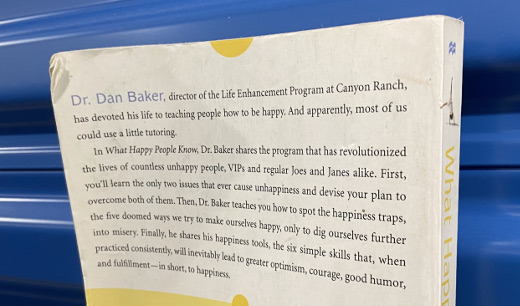
After sending a book I read to a good friend, he recommended a book back to me – he didn’t give me his copy of it as he said he rereads it every once in a while to “remind” himself. With a review like that, I promptly bought my own copy of the book and put it on my bookshelf. And there it sat, literally for years, until I recently read it. Long overdue, I wish I had read it sooner.
What was the book? What Happy People Know by Dan Baker. At the time of writing the book, Baker was the Founder and Director of the Life Enhancement Program at Canyon Ranch. If you’re unfamiliar with Canyon Ranch, it’s a wicked expensive resort yet worth every penny (so I have heard). As part of the overall resort, he worked with guests who were escaping from the day-to-day of life and trying to reset before reentry to the real world... which is my condensed assessment, not his words. As a result of his experiences there and throughout his career, he shares in this book what he has learned about the aptly titled book.
As I read through Baker’s stories, which in themselves were takeaways for me, I also had several specific takeaways.
Adaptation level theory – This theory states that once we become accustomed to any form of pleasure, it no longer has the power to make us happy. From too much sugar to too much money to too much vacation (if there’s such a thing), too much of anything can eventually be a bad thing.
We have 2 brains? – When talking about love, the association is always with the heart. If you asked people about this, they would say it’s emotional, however there is research this is actually physical and your heart communicates with your brain in a pairing called the heart-brain. This unity can be both beneficial and detrimental to your health depending on how your heart feels.
A bad case of the VERBs – Baker stated a patient had a case of victimization, entitlement, rescue and blame, or VERB. This resonated with me as I know I have had a case or 2 (at least) myself over the years and likely you reading this has as well. It’s something he says we do to ourselves and something we need to stop doing.
Sometimes we need help – Getting our stuff together is easy for some but not others. Even for those who mostly can get their stuff together, on occasion we may need help from others. Whether a loved one or a friend or a therapist, help is a good thing. It’s also ok if you observe someone having a challenge with their stuff to offer your help.
What Happy People Know is a good read and despite some sad stories, it is a very positive and encouraging read. I now know why my friend rereads is on a regular basis and I agree with him doing so. No matter your mood or outlook, this is a book that will get you thinking about attitude in a positive way. Where I may reread this in the future, for now I am giving away my copy to my nephew; he has been reading a wide variety of topics including many self-help books. I hope he and anyone else who reads it enjoys is as much as I did. And my friend too.
This is from The Hot Iron, a journal on business and technology by Mike Maddaloni.
Did you enjoy this? Subscribe to The Hot Iron by RSS/XML feed or Read by Email
Book Take-Aways • (0) Comments • PermalinkMy Takeaways From The Exponential Individual Playbook
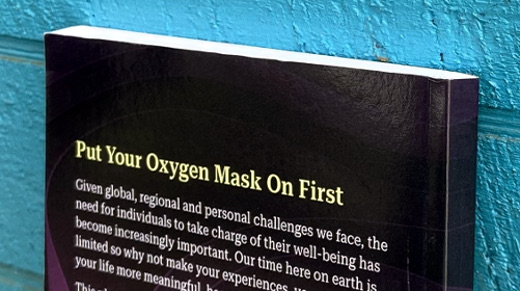
After I read Exponential Organizations and wrote my takeaways, I found a common theme throughout it that I could sum up with one word – growth. Simply put, by using its described principals and mindset an organization can experience exponential growth.
Based on that book and an organization that formed from it, OpenExO, a cohort of people from around the world, including my friend Eric Patel, formed their own organization centered on people. Exponential Individuals, or ExI, in my humble opinion is also about growth, but not exactly in the same way an organization would grow. An Exponential Individual grows more inward, deeper and outward.
The Exponential Individual Playbook was written by members of ExI and presents its own approach on how to be your best. In addition to the thoughtful advice throughout the book I also had some takeaways, including:
Put the oxygen mask on yourself first – This advice has been something I often tell others, whether on an airplane or not. It meant so much to the Playbook authors that they put it on the back cover. Doing so doesn’t make you selfish, and if anything, it strengthens you so that you can better help yourself and others.
MVS – Standing for Minimum Viable Standard, it was mentioned in the Playbook as the lower end of the range that defines you, with the high end being the ideal or optimal you. I thought this was a unique way of thinking about it – we always think the high-end but forget there is always a low-end that we may be starting from or may fall to. Compare this to MVP, or minimum viable product in the Agile/Scrum world, it is the least of you that you will accept. All things considered, the least in itself may not be all that bad.
Antifragile – This is defined as “representing things that benefit from disorder.” This is another phrase I am keeping in mind as I deal with disorder throughout my days.
Ego vs. We-Go – This reminded me of the expression that a rising tide lifts all boats. This is focus on the collective rather than on just yourself and is a theme throughout the book for making the best you and as a result the best of the world around you.
Eighteen authors – The Playbook was written by 18 different people which in my mind is a feat in itself! Each chapter lists its authors, which can range from 1 to many. To get them to write in a common approach and for each chapter to flow into the next as well as they did is an example in itself of being an Exponential Individual.
The Exponential Individual Playbook is a motivating guide that centers around the “soft” skills and elements of life often we (ok, I) overlook. As you go through the book there are exercises to complete, which I am going to do on a second pass through the book, as it’s good to read it first cover-to-cover. If you’re interested in a holistic approach to making a better you, I recommend the Playbook. Even though my friend is not only one of the authors but a co-founder of ExI as well, I will still give away this paperback copy of the book I bought, as I am expecting an autographed hardcover copy of the book the next time I see him!
This is from The Hot Iron, a journal on business and technology by Mike Maddaloni.
Did you enjoy this? Subscribe to The Hot Iron by RSS/XML feed or Read by Email
Book Take-Aways • (0) Comments • PermalinkMy Takeaways from No Hero
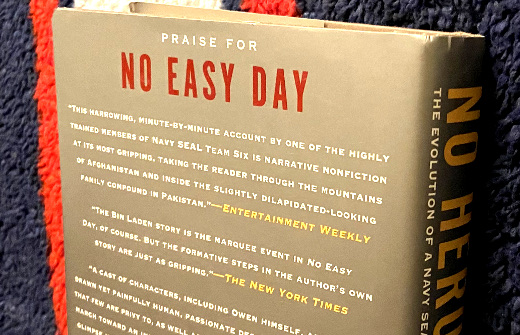
A statement commonly said by Americans when meeting someone who is or has served in the military is, “thank you for your service.” As much as it is said with respect, to me it seems to barely scratch the surface of the commitment, intense training and sacrifice of those who volunteer for a branch of the military. After reading No Hero: The Evolution of a Navy SEAL by Mark Owen, that feeling was only amplified.
Owen is the pen name for a member of U.S. Navy SEAL Team Six that was part of the mission that killed Osama bin Laden. No Hero is a follow-up to his first book, No Easy Day: The Firsthand Account of the Mission that Killed Osama bin Laden, and it tells his life story from his initial interest in being a SEAL to numerous missions around the globe. It was given to me by my “brother-from-another-mother” in response to a phrase he used that I have never heard before. This phrase is among the takeaways I had from this book.
Assess, Prioritize, Act – The book gets into detail of the grueling training designed to weed out those who are not SEAL material. In one such training Owen was in a dark room with a hood over his face and when it was removed he had to react to neutralize the situation all the while surviving. He was taught to assess the entire situation, prioritize it and act accordingly – all within mere seconds. Where most of us are not in life and death situations in our daily lives, this approach to problem solving is one I try to remember when an issue arises. Try is the key word there.
After Action Review – Abbreviated as AAR, it is a report written after a mission with contributions by everyone involved. It is designed to be an honest assessment of what worked and what did not, as well as be shared with other SEALs as a learning tool. In general business, a similar term used is “post-mortem” but they are usually comprised of a meeting where people go around the conference room table and talk of similar wins and losses, but not with the same honesty as an AAR. In the Agile/Scrum world, a retrospective at the end of a sprint is supposed to bring out similar facts and sentiments and is perhaps a little more true than a post-mortem. Where these events try to mirror an AAR, true lessons learned and improvements based on them are needed throughout all worlds.
Three-Foot World – This term was the catalyst for me getting and reading No Hero. One day I was talking with my friend and he said he is trying to control his three-foot world to which I responsed, what world? It comes from a training exercise that Owen participated in where he was free climbing a rock face in the Las Vegas desert. When concerned with falling, his instructor told him to only be concerned with his three-foot world, and make sure he had control of what was in front of him and to forget about how high he was up and falling down. The phrase really resonated with me, and when in the quagmire of my daily work and life I have to focus on my three-foot world and try to control what I truly am able to. Try is the key word there too. Needless to say it is a work in process.
The concept of the Three-Foot World also got me reading more about it beyond this book. Where I found several articles about it, there was no central site on it – no threefootworld.com. Now there is, as I registered the domain name and it is pointing to this very post. I reserve the right to write more on the topic, perhaps once I master it myself.
No Hero is a no holds barred story of the emotions and actions take in war and other conflicts that America has been immersed in recent years. When you read all that goes into what makes a SEAL and what they have to endure in battles, it is thought provoking. I recommend this book to everyone. As I give all my books away, I am sharing this with a friend who is a regular reader of this humble blog whom I believe will truly appreciate this story.
This is from The Hot Iron, a journal on business and technology by Mike Maddaloni.
Did you enjoy this? Subscribe to The Hot Iron by RSS/XML feed or Read by Email
Book Take-Aways • (0) Comments • PermalinkMy Takeaways From Outsmart
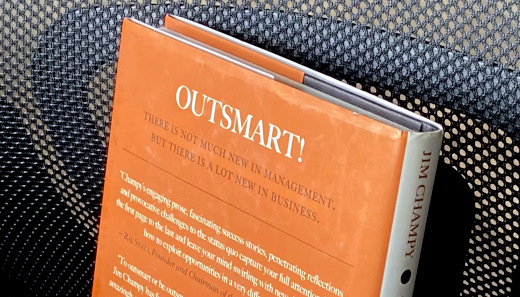
Working hard versus working smart. Some will say you have to do both at the same time, others say it’s an either or proposition. I have often viewed it as a pendulum that was weighted towards working hard, but knowing when to work smart is the challenge that requires literal balance and perspective.
In the book Outsmart!: How to Do What Your Competitors, Jim Champy tells the tales of several businesses and how, around a certain period of time, they were able to rise and outsmart their competitors in various ways. That period of time was the 2000’s, as this book was written in 2008. With that in mind going into reading it, would I have takeaways from it? Yes, and several.
Outsider perspective helps – The majority of the businesses highlighted featured leaders who came into it – the business itself or the industry – as an outsider, namely someone who didn’t grow up in that line of business. Taking a new idea or what was there, they were able to look at it differently than others from within and outside and were able to thrive.
You can change how people think by changing what they do – This quote was related to the story about MinuteClinic, and is one I can personally attest to. Whether a change of venue, responsibility or assignments, doing something different – whether it’s directly aligned with your interests or not – can change your opinion greatly.
Outsourcing not always the answer and more about cost saving than quality – Attributed to one of the owners of S. A. Robotics, it justifies how the firm kept most of its work internal and did not outsource. I agree with this, and I also add the element of time to this, as outsourcing can deliver something much later and with less quality, especially if the focus is on a reduced price.
The business world in 2008 – This book was published before the recession in 2008, and a follow-on to how these business are today, if they are still in business, would be interesting to read. The story of gun manufacturer Smith & Wesson was of high interest to me, as I grew up a few miles from their headquarters in Massachusetts, one that is being relocated to Tennessee due to a changing political climate towards guns in the Bay State. Where Shutterfly was revolutionary back in the mid-2000’s, it would be interesting to see how they compare to others in that space today.
The catalyst for me reading this book was its author himself. Jim Champy was the chairman and CEO of CSC Index, a management consulting firm that was a sister firm to where I was working early in my career. He is most known for, along with Mike Hammer, pioneering the concept of Business Reengineering that swept the corporate world in the 1990’s. When I saw this book, though our paths never crossed I was compelled nonetheless to read about my, um, colleague.Outsmart is a short but good read that shows by example how strategizing and execution of that strategy can make a difference for a business. If you’re looking for inspiration to change and rise above where you are with your business, I recommend this book. As for whom I am giving it to, it’s on its way to my friend John Wall, an avid reader of this humble blog and the co-host of the long-running and best marketing podcast out there, Marketing Over Coffee. Why? Check out his recent episode where he talks about Jibbitz, who is one of the businesses featured in this book.
This is from The Hot Iron, a journal on business and technology by Mike Maddaloni.
Did you enjoy this? Subscribe to The Hot Iron by RSS/XML feed or Read by Email
Book Take-Aways • (0) Comments • Permalink
